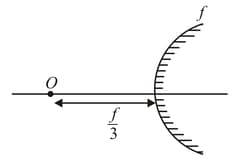Embibe Experts Solutions for Chapter: Ray Optics, Exercise 1: Level 1
Embibe Experts Physics Solutions for Exercise - Embibe Experts Solutions for Chapter: Ray Optics, Exercise 1: Level 1
Attempt the practice questions on Chapter 18: Ray Optics, Exercise 1: Level 1 with hints and solutions to strengthen your understanding. Physics Crash Course JEE Main solutions are prepared by Experienced Embibe Experts.
Questions from Embibe Experts Solutions for Chapter: Ray Optics, Exercise 1: Level 1 with Hints & Solutions
Which one of the following diagrams correctly illustrates the refraction of a normally incident ray of light through a glass slab?
Optical fibers, though bent in any manner, allows light to pass through. What is the inference that one can draw from it?
The radii of curvature of the spherical surfaces of a biconvex lens are and . The refractive index of the material of the lens is . If the lens is submerged in a liquid of refractive index , its effective focal length will be
The minimum distance between object and it's real image formed by a convex lens is:
In a motor car, spherical mirrors are utilised at two different places,
(i) the head light and
(ii) rear view mirror. What type of mirrors are used?
A short linear object is placed on the principal axis of convex mirror of focal length as shown in the figure. The ratio of transverse magnification to longitudinal magnification is :

An object is placed in front of a convex mirror. Which one of the following statements is correct?
A small angled prism of refractive index gives a deviation of . The angle of prism is _____
